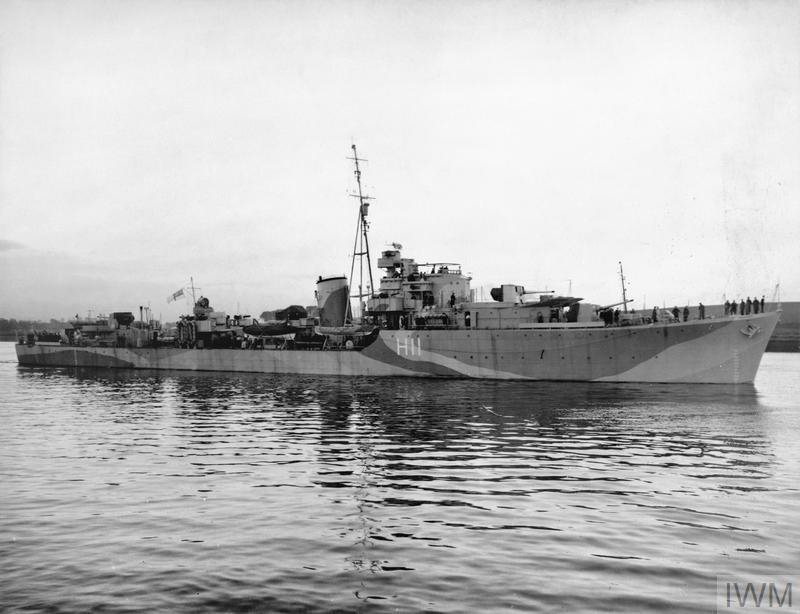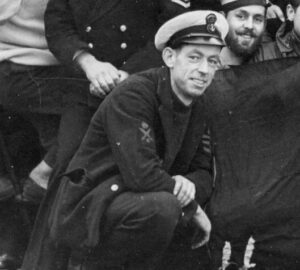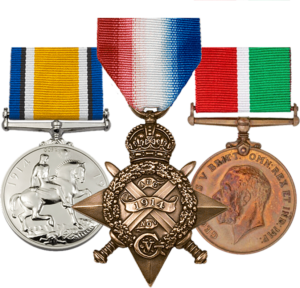Harold joined the Royal Navy as a boy on 24 September 1924 aged 16, which was the start of a varied 34-year career that included service onboard battleships, cruisers, destroyers, aircraft carriers, and submarines.
Training and early service
Harold entered the navy training establishment at Devonport, HMS Impregnable, as a Boy Second Class and was described as 5 feet 3 inches tall with a 32-inch chest, brown hair, hazel eyes, and a ‘fresh’ complexion. He was soon promoted to Boy First Class in May 1925.
After training Harold joined the crew of HMS Furious in September 1925, just as it joined the fleet following conversion from a battlecruiser to one of the world’s first aircraft carriers. Furious was assigned to the Atlantic Fleet and spent much of the next several years conducting trials for practically every aircraft in the Fleet Air Arm inventory. These included landing and flying-off tests, and notably the first carrier night-landing on 6 May 1926. Harold celebrated his eighteenth birthday on 8 August 1926 with a promotion to Ordinary Seaman. He had by now grown to 5 feet 8 inches with a 34-inch chest and a tattoo of a cross on his right forearm.
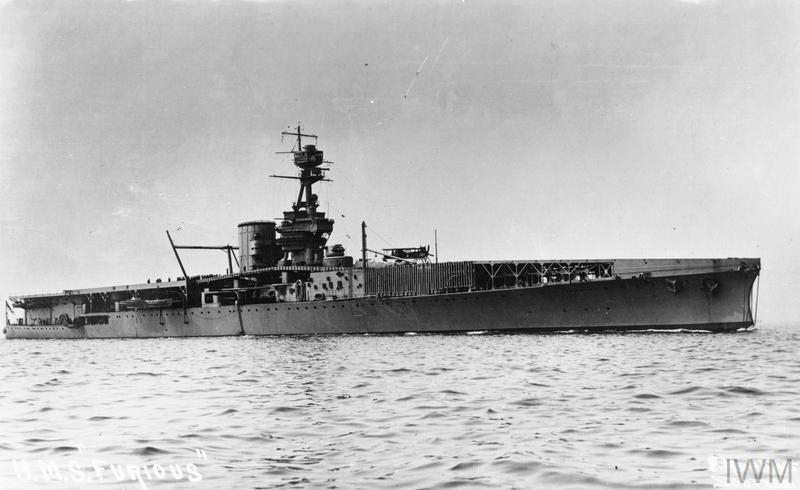
After 19 months onboard Furious, he joined the crew of HMS Vanessa, an old V-class destroyer that has been in reserve at Rosyth since the end of the First World War. His duties would have included maintaining the ship so that it would be ready whenever needed. Harold served onboard for 20 months, being promoted to Able Seaman in December 1927 – a rank that he held for the next 12 years.
Harold then joined the crew of the elderly light cruiser HMS Lowestoft in April 1929, but only served for six months before it was sold for scrap. After a 19-month period of shore duty he joined HMS Warspite in June 1931. This was a formidable Queen Elizabeth-class battleship, recently returned from the Mediterranean to join the Atlantic Fleet. Most of her time was spent on routine patrols, and on one such voyage in March 1933 she was rammed in fog off Portugal by a Romanian passenger ship, but thankfully not seriously damaged. Warspite began a major reconstruction in March 1934, at which point Harold departed after 2 years and 9 months onboard.
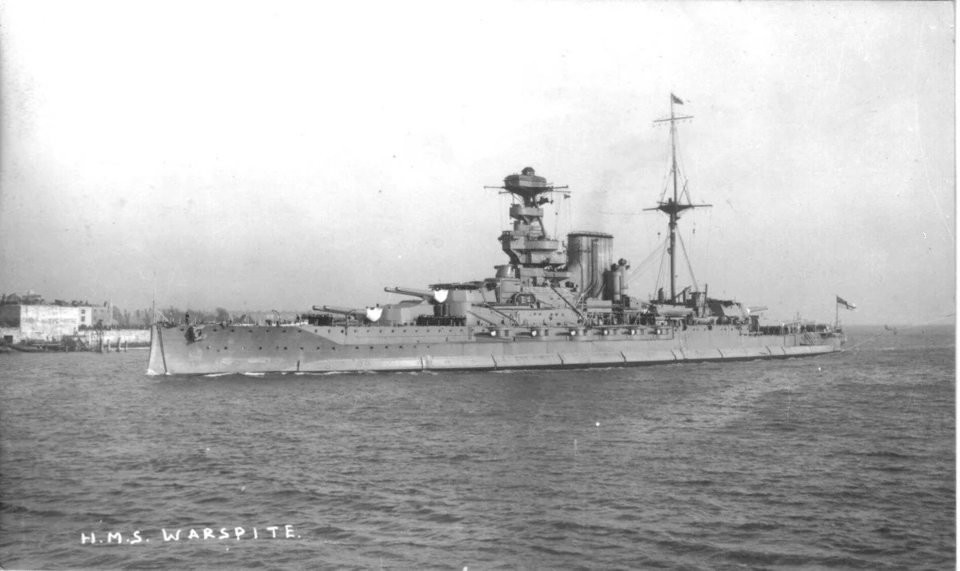
Torpedo specialist and service on destroyers
Harold was sent to HMS Vernon in February 1935, a school that provided intensive training courses in torpedoes, mines, depth charges and shipboard electrics. It is likely that he was trained specifically in torpedo operations. He then began working for short periods on ships that were docked for refit, beginning with the brand-new G-class destroyer HMS Garland in April 1936 which was preparing to sail to join the Mediterranean Fleet. He then spent June and July with HMS Douglas, an older Scott class destroyer.
In August 1936, Harold joined the permanent crew of HMS Grenville, a brand-new G-class destroyer that spent the remaining pre-war years as the flagship of the 1st Destroyer Flotilla with the Mediterranean Fleet. This included ten months deployed off the Spanish coast during the Spanish Civil War, enforcing the arms blockade imposed by Britain and France on both sides of the conflict. After almost two years’ service, Harold left the crew when she returned to Portsmouth for a major refit in July 1938.
After a period of shore duty and a month onboard the training ship HMS Dunedin, he joined the crew of the A-class destroyer HMS Anthony in March 1939. For the first year of the war, Anthony was kept busy with anti-submarine patrol and convoy defence duties off the British coast. From 26-30 May 1940 the ship participated in the evacuation of troops from Dunkirk (Operation Dynamo) until damaged by a near miss during an air attack. They were forced to return to port for repairs, having evacuated over 3,000 men. Harold was promoted to Leading Seaman in June.
As the Battle of the Atlantic intensified, Anthony was transferred to convoy escort duties in the Western Approaches and joined the 4th Escort Group. Its role was to protect the merchant ships from air and submarine attack (convoys protected during this time include MB 006/1, SA 010, SA 012, SA 020, HX 061, OB 196, OB 199, HX 073, OB 221, HX 075, HX 078, OB 250, SL 055, OG 049, HG 049, OB 276, SC 019, OB 282, SL 063). Anthony was damaged in an air raid on the Clyde on 13 February 1941, which put it out of action for the rest of the year. After an eventful 20 months, Harold departed the crew and was promoted to Petty Officer.
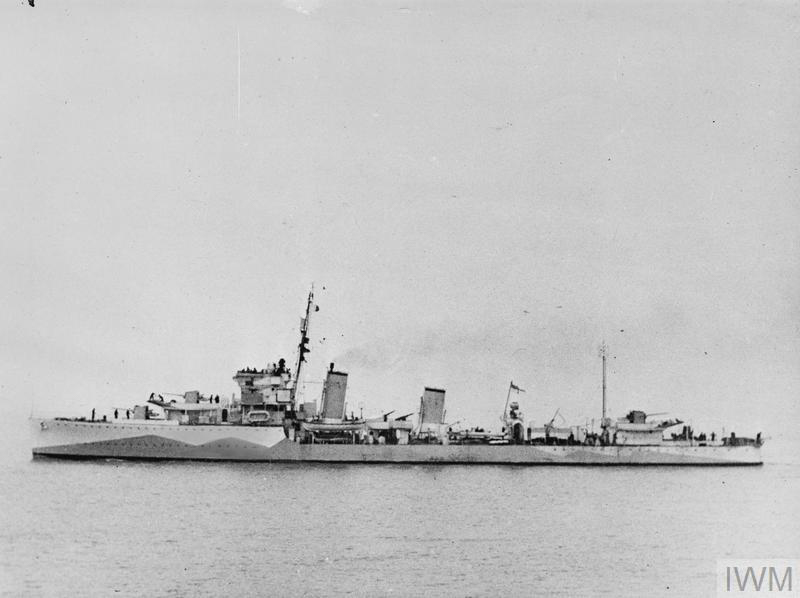
Moving to the Submarine Service
After six months at HMS Vernon, in September 1941 Harold began his training to join the Submarine Service. This involved spells ashore at the Royal Navy Submarine School at HMS Dolphin, as well as stints onboard HMS Cyclops, a repair and depot ship for the 7th Submarine Flotilla based in Rothesay, and the elderly training submarine HMS Oberon. Harold then deployed to the Mediterranean, one of the primary hunting grounds for British submarines, arriving at Gibraltar in July 1942 to join the submarine tender HMS Maidstone. Built in 1938 to support the increasing numbers of submarines on distant stations, it was equipped with everything needed for up to nine boats, including engineering, electrical and torpedo repair shops; plants for charging submarine batteries; fuel and ammunition. It was also home to the crews when not at sea, with laundries, a cinema, hospital, chapel, two canteens, a bakery, barber’s shop, and an operating theatre and dental surgery.
Harold sailed on his first war patrol with the crew of HMS Rorqual, a Grampus class mine-laying submarine. The patrol was a short one, returning after just two weeks. Harold had another opportunity when he joined the crew of HMS Seraph (also known as HMS P219) on 1 September 1942. This was a brand-new S-class submarine, designed for operation in the shallower and more restricted waters of the North Sea, which in turn made it ideal for secretive insertion and extraction missions. After a 19-day war patrol in the Alboran Sea they returned to Maidstone, before heading back out for a longer patrol on 1 October. Her first task was to reconnoitre landing beaches in Algiers for the upcoming Operation Torch landings of US forces.
The submarine participated in Operation Flagpole on 16 October 1942, carrying General Eisenhower’s deputy, Lieutenant General Mark W. Clark, to North Africa for secret negotiations with Vichy French officers. Loaded with collapsible canoes, sub-machine guns, walkie-talkies, and other supplies, the submarine carried Clark, two other US Army generals, a US Navy Captain, several other officers, and three British Commandos. They sailed to the Algerian coast on 19 October and the following night offloaded the passengers ashore. The operation was important as it helped to reduce French opposition to the upcoming landings. General Clark and his party were picked up on 23 October and transferred to a Catalina flying boat the following day. After an uneventful return, Seraph docked in Gibraltar on 25 October.
Two days later, the crew were ordered to set sail again as part of Operation Minerva, to pick up French General Henri Giraud from the coast of Southern France. They patrolled up and down the coast until the rendezvous was received by signal. On the night of 5/6 November, they finally arrived 20 miles east of Toulon and secretly took aboard Giraud, his son, and three staff officers. They were going to a meeting with Eisenhower in Gibraltar, who intended to enlist pro-Vichy forces at Oran and Casablanca to the Allied cause. However, Giraud flatly refused to deal with the British, and since there was no US boat within 3,000 miles, Seraph became the ‘USS Seraph’, flying the US Navy ensign, while the crew affected American accents. However, it fooled nobody – including Giraud, who was transferred to a Catalina the next day.
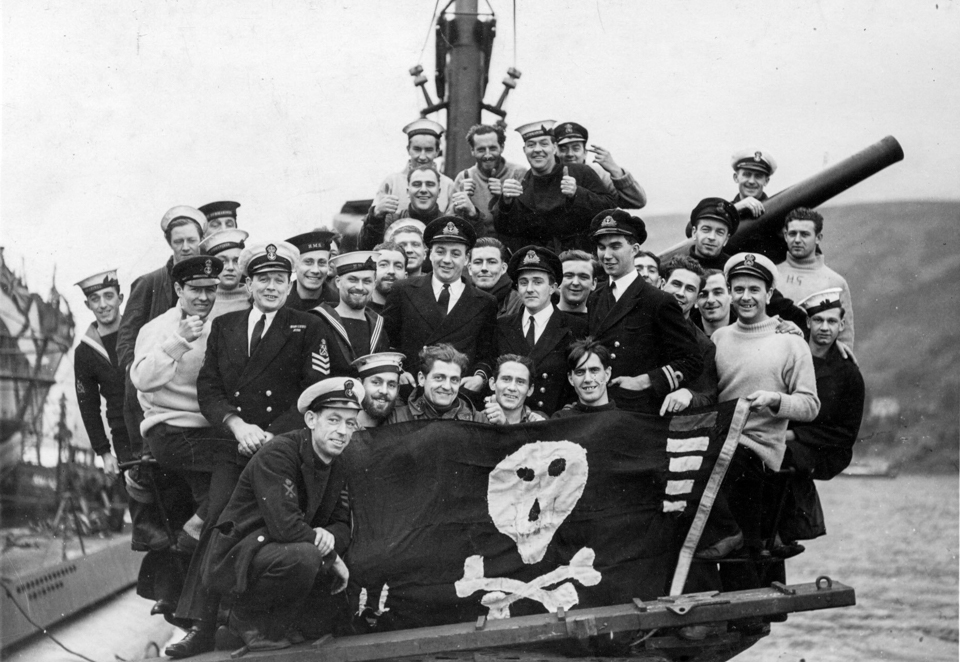
On 24 November, Seraph sailed to patrol between Sicily and Tunisia. Five days later they fired four torpedoes against a convoy about 30 nautical miles west of Marettimo Island, Italy missing the Italian passenger/cargo ship Citt di Tunisi. In the early hours of 2 December, they attacked another Italian convoy with three torpedoes and were depth charged in return. It is thought that they may have sunk the merchant ship Puccini, but since the convoy was attacked by British surface forces at the same time it is difficult to confirm. On 4 December Seraph attacked the German transport ship Ankara about 20 nautical miles west of Marettimo Island, which had a heavy escort of destroyers. Although six torpedoes were fired, Italian fighters escorting the convoy sighted the torpedo tracks and gave the alarm. Two of the destroyers were narrowly missed by just a few metres. Later that afternoon they fired their one remaining torpedo, but again missed the target. Seraph sailed to Algiers, now in Allied hands, on 8 December to resupply.
The next patrol started on 21 December 1942, with Seraph again involved in another special operation. Operation Peashooter required them to reconnoitre Galita Island off northern Tunisia, which they began on 23 December, although came under attack from a shore gun requiring a quick dive. Later that evening they tried to attack an enemy submarine, but while submerged collided with the target and suffered some damage. The same submarine was encountered on Christmas Eve, with both firing torpedoes and narrowly missing each other. The damaged boat arrived at Bone on Christmas Day, departing for Algiers on the 26 December. After temporary repairs, Seraph returned to Gibraltar, and then onwards to the UK for a much-needed overhaul and some crew leave. It sailed again at the end of April to play a pivotal role in the legendary Operation Mincemeat, but Harold had by then left the crew.
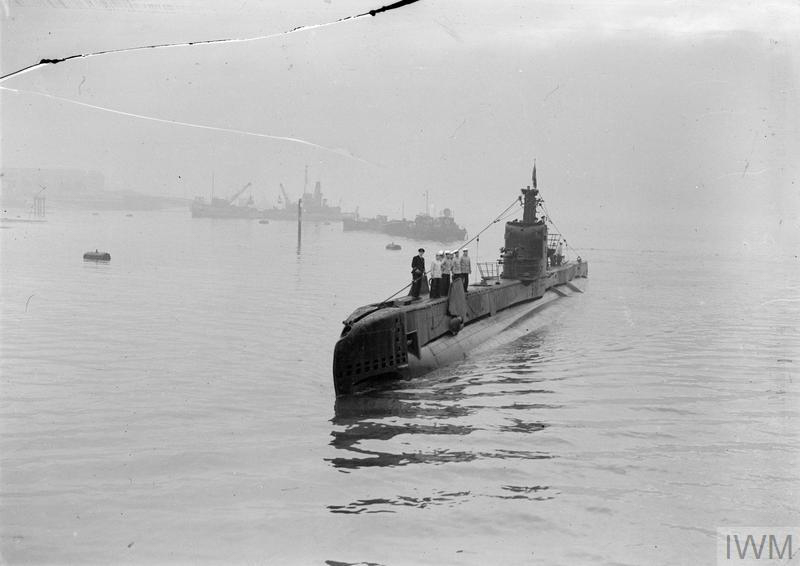
Fighting the Japanese
He served ashore for 15 months, including spells at HMS Veron and HMS Excellent, the Royal Navy’s main gunnery training establishment. It is not known whether he was a student or an instructor. In April 1944 Harold was promoted to Acting Commission Gunner (T), which was a Warrant Officer rank. The (T) indicated that he was a torpedo specialist. He returned to sea in August 1944 as part of the crew of HMS Racehorse, a fairly new R-class destroyer. Having already served in the Atlantic and Mediterranean, Harold now found himself facing the Japanese in the Far East. During August, Racehorse was part of the screen for the battleships Queen Elizabeth, Valiant and Richelieu (French), the battlecruiser Renown with seven cruisers and four other destroyers. It deployed with six other destroyers to screen the aircraft carriers Victorious and Indomitable and the battleship Howe during Operation Light, the aerial bombardment and reconnaissance of Sumatra between 17-18 September. Similar flotilla patrol and screening duties continued into March 1945.
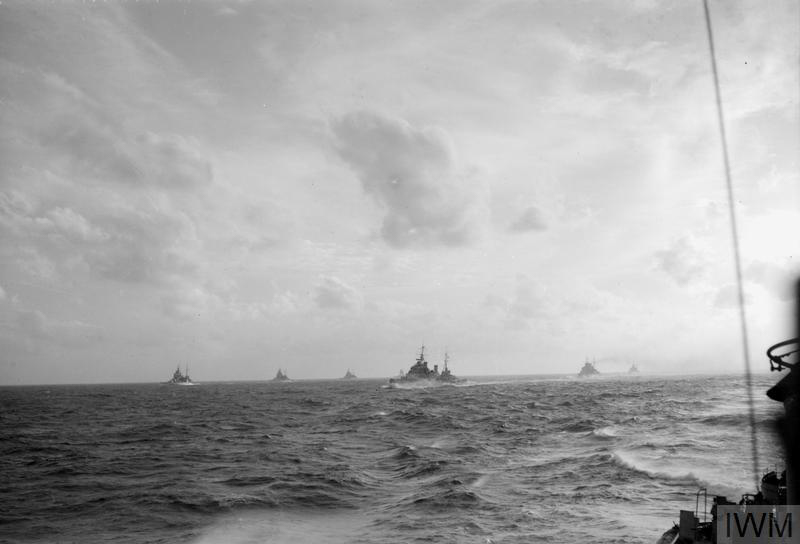
On 1 April 1945 she formed up with three other destroyers for a sweep off the Burma coast between Mergui and Amherst, to investigate possible bases for motorboat operations. On the 4th they bombarded a radar station on Great Coco Island, before destroying several small sailing boats in the subsequent days. On 25th it deployed with two other destroyers for offensive patrols in the Indian Ocean during allied landings in Burma. Five days later they intercepted a convoy between Rangoon and Tenasserim, sinking all 11 ships before bombarding Car Nicobar and Port Blair.
In June, Racehorse was part of the screen for the escort carriers Stalker, Khedive and Ameer and the cruisers Suffolk and Royalist as they undertook photo-reconnaissance missions over Southern Malaya and attacked airfields in Northern Sumatra as part of Operation Balsam. In July it screened the battleship Nelson and carrier Empress to cover a mine clearance force off Phuket Island. With the war nearing its end, Harold left Racehorse on 22 August 1945, after just over a year as a member of her crew. It’s not known what happened to Harold for the next eight months, but in May 1946 he arrived at HMS Bambara, an air base at Trincomalee in Ceylon.
Post-war service
In October 1946 he joined the crew of HMS Zest, a Z-class destroyer that was part of the 4th Destroyer Flotilla of the Home Fleet, which from February 1947 was used for torpedo training at Portsmouth. Harold spent another four months at HMS Vernon from 18 May 1948, followed by almost two years at HMS Dolphin.
Harold returned to sea one last time, joining the crew of HMS Swiftsure on 6 September 1950. This was a Minotaur-class light cruiser that was the flagship of the 4th Cruiser Squadron, becoming the flagship of the 2nd Cruiser Squadron the following year. He served onboard for two years and was promoted to Senior Commissioned Gunner in April 1952.
Harold’s final posting was also his longest. He returned to HMS Vernon in October 1952, where he remained for the next five years and 10 months until finally retiring on 7 August 1958, one day before his 50th birthday. In 1956 the Navy decided to create a Special Duties List to give meaningful recognition to men who had been promoted to officers by virtue of their specialist expertise, and thus those with the rank of Senior Commissioned Officer became Lieutenants on 1 January 1957.
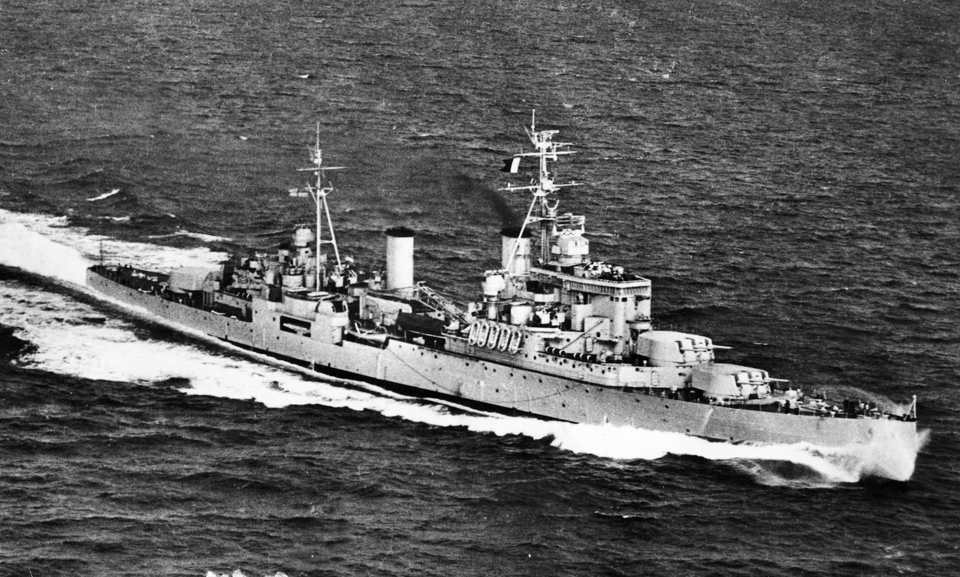
Ships
- HMS Furious (1925-1927)
- HMS Vanessa (1927-1929)
- HMS Lowestoft (1929)
- HMS Warspite (1931-1934)
- HMS Garland (1936)
- HMS Douglas (1936)
- HMS Grenville (1936-1938)
- HMS Anthony (1939-1941)
- HMS Maidstone (1942)
- HMS Rorqual (1942)
- HMS Seraph (1942-1943)
- HMS Racehorse (1944-1945)
- HMS Zest (1946)
- HMS Swiftsure (1950)
Medals






